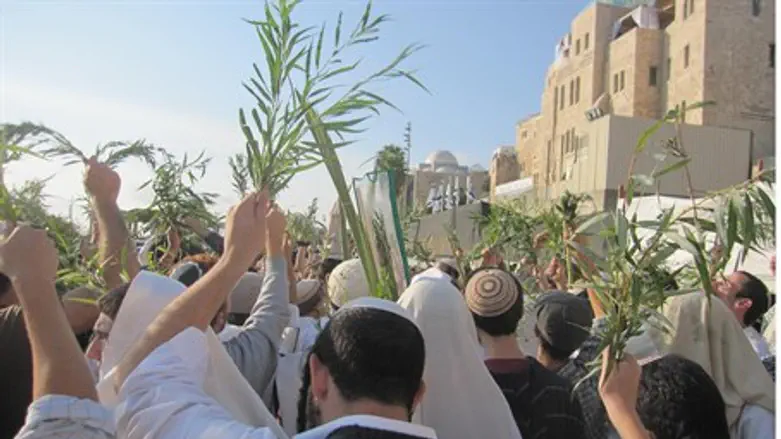
On Hoshana Raba, the last day of Sukkot and traditionally, the last day to affect one's standing before G-d in the New Year, the Western Wall fills with worshippers before the morning star rises in the sky.
Some wear white clothing to symbolize their hope to begin the New Year free of any vestiges of the prior year's wrongdoing. A traditional greeting for the day is "pitka tava" - may G-d write a good prognosis for you.
Many Jews do not sleep the entire night of Hoshana Raba, attending Torah lectures and reading the special "Tikkun Leil Hoshana Raba", the book of Dvarim/Deuteronomy which is a review of the Torah's commandments and the entire Book of Psalms.
During the morning's service, seven (or all) Torah scrolls are placed on the bimah (central podium) and the congregation marches around them seven times holding their lulavim and reciting the dramatic "Hosha na" (literally, save us) prayers.
Five willow branches, but not the ones used for the lulav, are tied together and struck on the floor at the end of the service, which is a reminder of similar services held in the Holy Temple. They can be seen held by those praying at the Wall.
Some commentators say that the willow branches symbolize the enemies of the Jewish people and G-d's revenge upon them, a major theme of the Sukkot Haftorah readings.